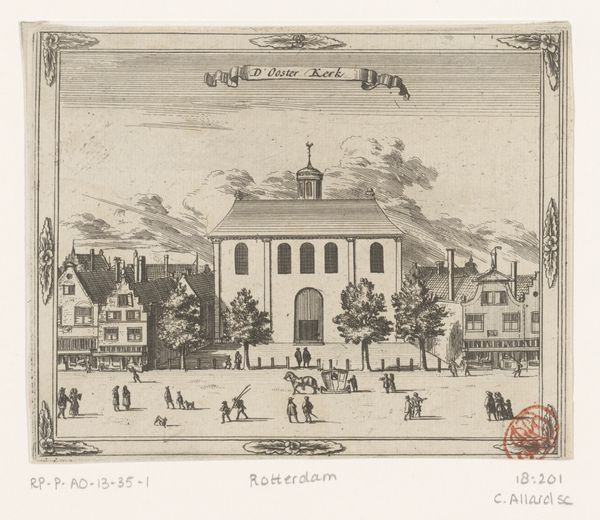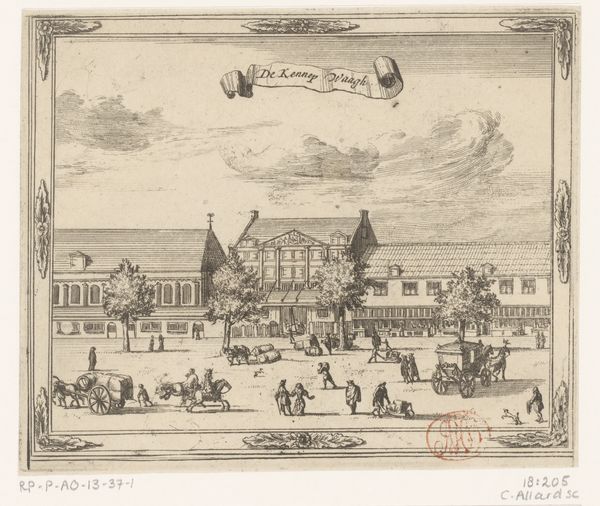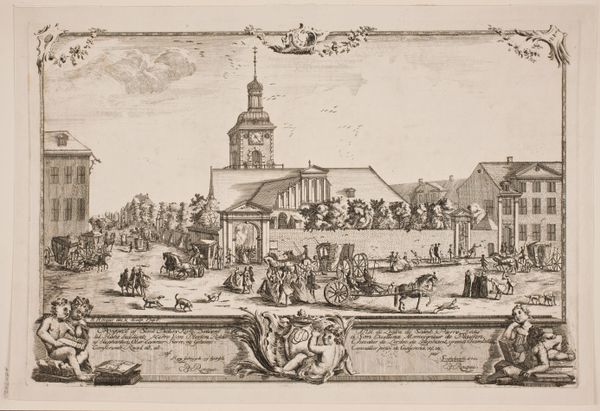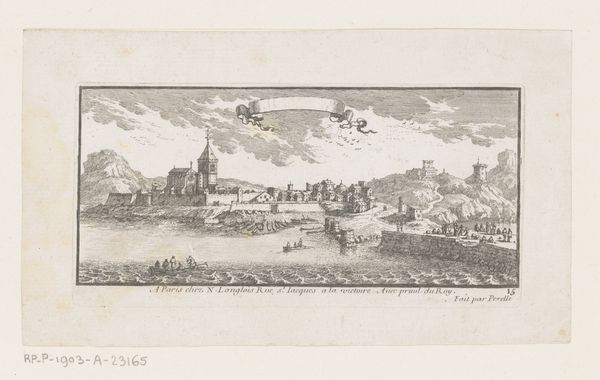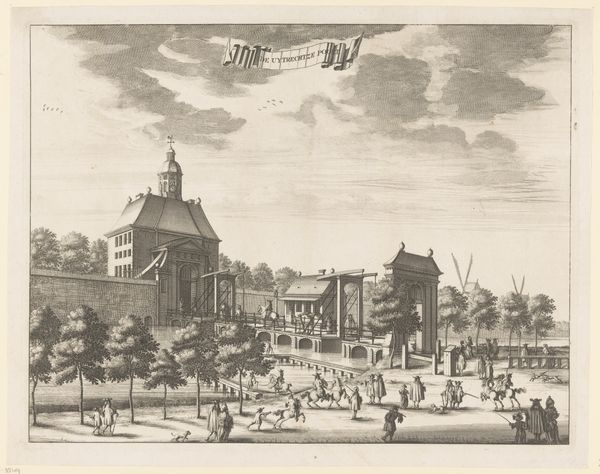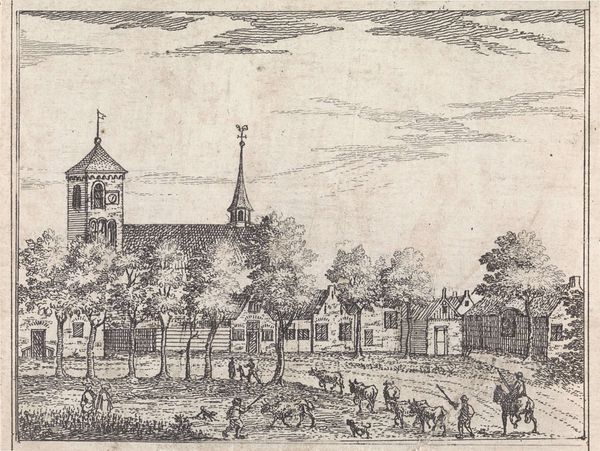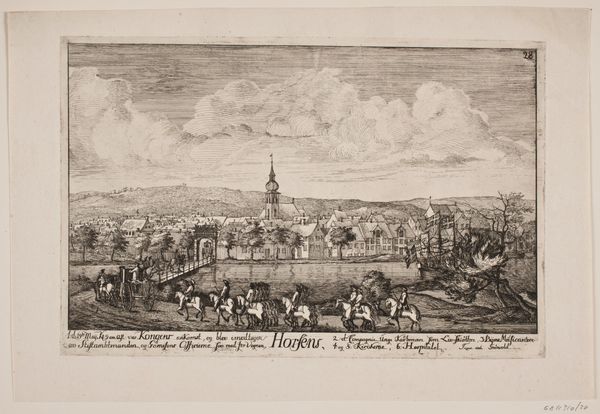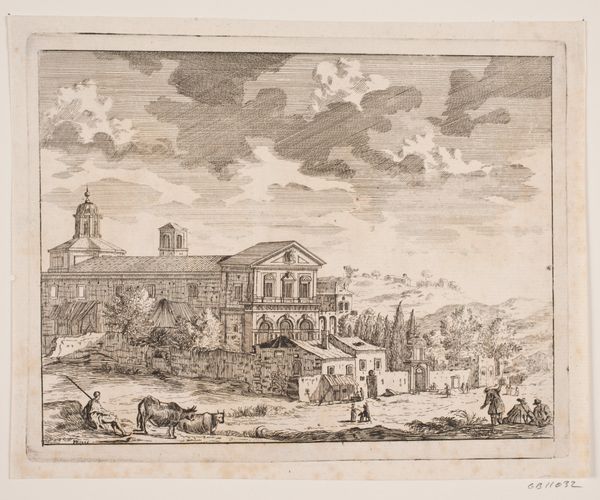
print, engraving
#
baroque
# print
#
cityscape
#
engraving
Dimensions: height 120 mm, width 145 mm
Copyright: Rijks Museum: Open Domain
Editor: So, this is "Gezicht op het Gasthuis te Rotterdam" by Jacobus Harrewijn, an engraving from around 1696 to 1730. It’s a cityscape of a hospital, and it feels so lively with all the figures bustling around. What strikes you most about this piece? Curator: Well, seeing this image, it makes me think about how urban spaces were represented and perceived in the early modern period. What we see here isn’t just a hospital; it's a statement about Rotterdam’s civic pride, and public institutions' prominence within the city’s image. What sort of message would this scene convey to a contemporary audience, do you think? Editor: That’s a good question. Maybe that Rotterdam is a thriving, well-organised place, taking care of its citizens? The inclusion of everyday people, rather than just the building itself, seems deliberate. Curator: Precisely. The depiction of the hospital—its accessibility and integration into daily life—challenges the notion of it being a place of despair. Instead, it becomes a focal point in the city. Do you see any elements here that could imply a form of social commentary? Editor: I guess the diversity of people suggests that the hospital served a wide range of society, not just the elite. I also wonder if the inclusion of animals like dogs and a horse pulling a wagon also point to a blending of rural life with the urban setting. Curator: Indeed. Harrewijn provides a social study and also promotes civic engagement with the Hospital. It’s an orchestrated performance meant to project certain ideologies. In essence, it’s political messaging in visual form. Editor: That's fascinating! It completely changes how I see the image, beyond just a pretty cityscape. Curator: Exactly! It invites you to consider the intention behind its creation. It gives context to how urban spaces sought to cultivate public opinions through commissioned artwork. Editor: Thanks so much for offering this perspective. I now feel much better prepared to contextualize these scenes within broader historical, social and institutional contexts. Curator: My pleasure. Remember, every stroke, every inclusion, every detail echoes intentions influenced by society. Art serves as a powerful tool, often echoing voices of progress, stability and public perceptions of such societal concepts.
Comments
No comments
Be the first to comment and join the conversation on the ultimate creative platform.
